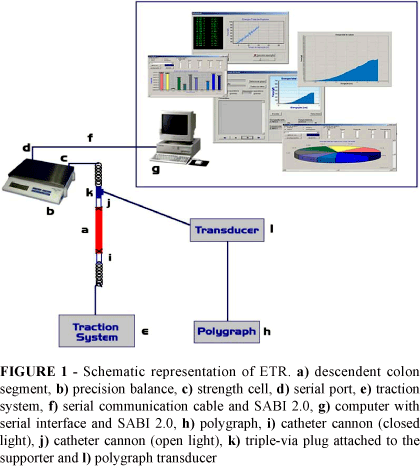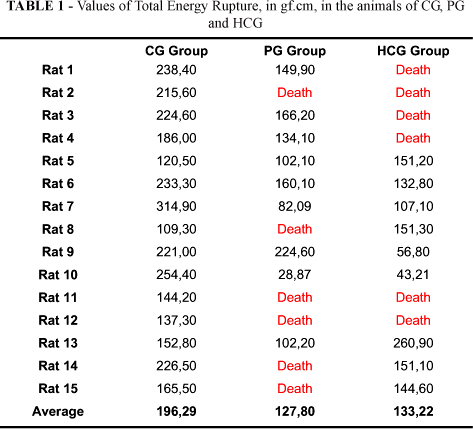PURPOSE: To analyze the effects of hyperbaric oxygen therapy (HBO) on the mechanical resistance of anastomosis performed in rats' distal colon presenting peritonitis induced by ligature and cecal punction using the Total Energy Rupture biomechanical test (ETR). METHODS: It was used 45 rats divided into three groups of 15 animals each. In Control Group (CG), it was performed anastomosis in distal colon without peritonitis. In Peritonitis Group (PG), it was performed anastomosis six hours after the induction of peritonitis by ligature and cecal punction. In Hyperbaric Chamber Group (HCG), it was performed six hours after the induction of peritonitis by ligature and cecal punction. The animals on CG and PG were kept at place air while the animals on HCG were placed on an experimental hyperbaric chamber in order to inhale oxygen at 100%, two absolute atmospheres, for 120 minutes, for four consecutive days. Euthanasia took place on the fifth day of the experiment. All the animals underwent to Total Energy Rupture Biomechanical Resistance test (ETR). Total Energy Rupture was defined as the necessary internal energy stored up to promote the colon rupture after an external traction force imposition. RESULTS: The Peritonitis Group presents smaller average ETR than Control Group. There was no statistical difference between Peritonitis Group and Hyberbaric Chamber Group. CONCLUSION: Hyperbaric oxygen therapy did not alter the mechanical resistance of anastomosis performed in distal colon of rats under the presence of peritonitis induced by ligature and cecal puncture.
Anastomosis, Surgical; Colon; Hyperbaric Oxygenation; Peritonitis; Rats







